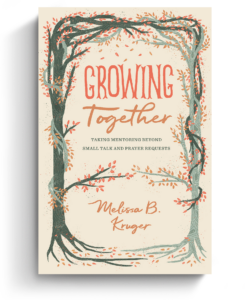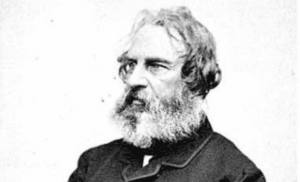In a recent sermon, I preached on substitutionary atonement—the belief that Christ absorbed God’s wrath for sinners through his death on the cross. While eager to teach this precious truth, I knew many people today find it untenable and unpalatable.
Modern people balk at the bloodiness of the cross. Why would God kill his own Son? Some even label it “divine child abuse.” One author describes God as a “bratty violent murderer who . . . desperately needed his son’s blood in order to save all the rotten humans he accidentally created.” Some emphasize other atonement theories that deal less with sin and sacrifice (i.e., Christus Victor, or Christ as example). These theories have merit, revealing implications of Christ’s death, but too often they’re wielded to oppose substitutionary atonement, not supplement it.
In this environment of skepticism, how do we preach Christ crucified? The obvious answer is: preach the Word. “Let the lion loose,” Charles Spurgeon said. But alongside clear exegesis is one of the preacher’s sharpest tools: illustration. We explain the truth, in part, by painting word pictures. We want people to hear, but also to see. Along these lines, John Piper writes:
Experience and Scripture teach that the heart is most powerfully touched not when the mind is entertaining abstract ideas, but when it is filled with vivid images of amazing reality.
Illustrations carry doctrines down from the unreachable heavens into our hands, where we can examine them. Illustrations persuade, not through manipulation but demonstration. They make truth more visible, graspable, concrete. Hence Jesus, master teacher, used them constantly.
Illustrations of Everyday Atonement
As I preached on the atonement, I used four illustrations from everyday life:
1. Food
Food demonstrates how everyone benefits from a form of atonement, whether they acknowledge it or not. Everything we eat—whether plant or animal—was once alive. It had to be plucked from the tree, pulled from the earth, or slaughtered in order to sustain you. Every meal is a testament to the fact that other things must die, if you are to live.
Most people who regularly enjoy a juicy burger or steak have never looked into the eyes of the animal that gave its life for their sustenance. The realities of the slaughterhouse are unseen and unthought-of by most consumers—we reap the benefits without considering the cost. It’s hypocritical to caricature the cross as needlessly cruel while benefiting from atonement at the dinner table every day.
It’s hypocritical to caricature the cross as needlessly cruel while benefiting from atonement at the dinner table every day.
Some may object: it’s one thing to kill an animal, but another entirely for God to kill his Son. Yes, it’s true that the cross is horrific. And yet Christ willingly embraced it, which should fill us with trembling and humility, not disgust.
2. Our Bodies
The human body is another good analogy for the salvific necessity of atoning sacrifice. Tim Keller cites this powerful illustration from Ajith Fernando:
Have you ever had an infected wound or sore? When you open it, what comes rolling out? Pus. And what is that? It is basically the collective corpses of white blood cells fighting the infection that have died so that you may live. Do you see? Substitutionary salvation is in your very blood.
Pus is unpleasant, but it’s life-saving. Without it, we die. Our immune systems mirror the reality that Christ succumbed to sin’s infection so that it wouldn’t destroy us.
3. Stories
Whether we recognize it or not, we’re drawn to substitutionary atonement. We seek it out in stories on the page and screen. Some of the most beloved stories culminate in substitutionary atonement—Harry Potter gives his life for those he loves; Darth Vader sacrifices himself to save his son Luke; Aslan yields to the murderous knife of the White Witch.
Something stirs our souls when we watch someone willingly die for another—it moves and breaks us simultaneously. Why? It’s because our souls were formed by a Creator who sacrificed himself for us. We may deny atonement with our heads, but our hearts can’t be fooled.
We may deny atonement with our heads, but our hearts can’t be fooled.
4. Nature
The natural world abounds with illustrations of substitutionary atonement. Salmon break their bodies on their harrowing journey to spawning grounds, as described here:
[Salmon] are able to travel many miles to spawning grounds by using the stored energy from their ocean residence. All adult salmon die after spawning, and their bodies decay, thus providing nutrients to future generations of salmon.
Similarly, forest fires demonstrate how death begets life. It’s why firefighters ignite controlled burns:
Fire can be rejuvenating. It returns nutrients to the soil in the ashes of vegetation that could otherwise take years to decompose. And after a fire, the additional sunlight and open space in a forest can help young trees and other plants start to grow. Some plants, such as certain pine species, require fire before the cones or fruits containing the seeds can release them. These cones or fruits need fire to melt a resin that holds the seeds inside. As a result, without fire these species cannot reproduce.
Creation testifies that substitutionary atonement is everywhere.
Teaching on sin, its consequences, and its solution will never be cool, clever, or convenient (1 Cor. 1:18, 23). Our illustrations don’t aim to dress up the gospel or hide its blunt edges. But with God’s help, illustrations will push back Satan’s well-spread lies about Christ’s sacrifice, and affirm that his death is salvific and beautiful, not barbaric.
Involved in Women’s Ministry? Add This to Your Discipleship Tool Kit.
 We need one another. Yet we don’t always know how to develop deep relationships to help us grow in the Christian life. Younger believers benefit from the guidance and wisdom of more mature saints as their faith deepens. But too often, potential mentors lack clarity and training on how to engage in discipling those they can influence.
We need one another. Yet we don’t always know how to develop deep relationships to help us grow in the Christian life. Younger believers benefit from the guidance and wisdom of more mature saints as their faith deepens. But too often, potential mentors lack clarity and training on how to engage in discipling those they can influence.
Whether you’re longing to find a spiritual mentor or hoping to serve as a guide for someone else, we have a FREE resource to encourage and equip you. In Growing Together: Taking Mentoring Beyond Small Talk and Prayer Requests, Melissa Kruger, TGC’s vice president of discipleship programming, offers encouraging lessons to guide conversations that promote spiritual growth in both the mentee and mentor.

































